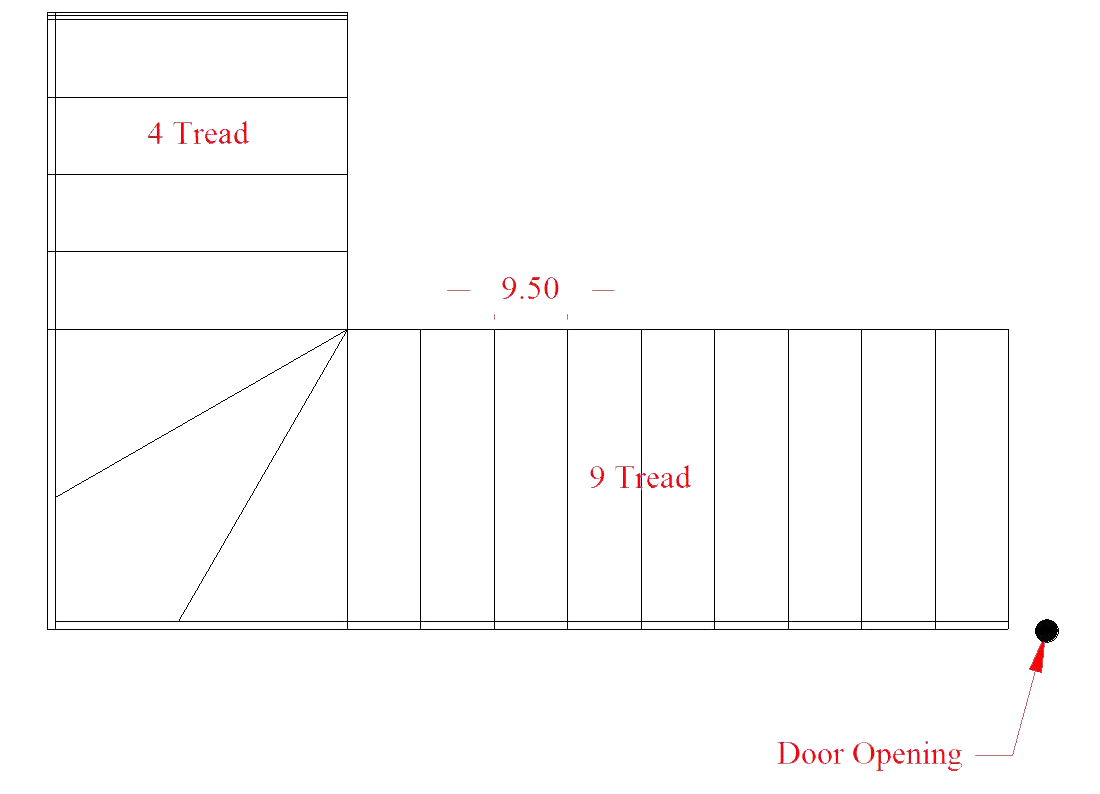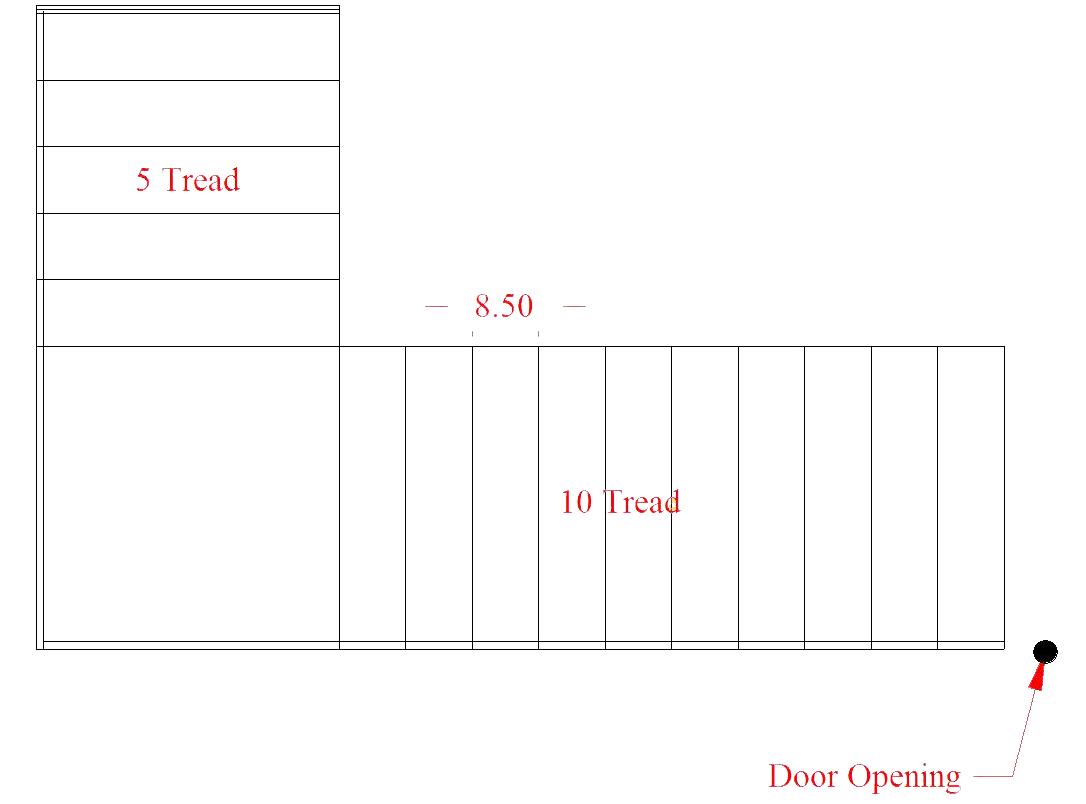I recently talked to a customer about their stair layout options. Theirs was not unlike many stairs in that it ascends, turns 90°, and continues to the top floor. They asked whether or not a landing could be used at the turn, or if a three step winder was necessary, the preference being for a landing. Many people tell me that they aren’t comfortable with winders as they feel that the treads are a bit short on the inside step. So, I measured up the stairwell opening and determined what could be fit in the space available. There were some constraints:
- There would have to be a few treads above the winder (or landing)
- There was a door opening at the foot of the stair, meaning that the stair could not stretch beyond that point
As it turned out, the stair required 17 risers (16 steps), there was adequate headroom and either layout would work in this situation, but each had its limitations.
Why would anyone use a winder?
Stair winders are three pie shaped treads that turn through 90° and they do come to a virtual point on the inside (although, at the point where you plant your feet there is about 7-8” of footing on the inside but about 12-13” of footing on the other side). While they can be used as a unique architectural element in your home, winders are also very useful as a space saving (or space accommodating) fixture in your stair: where a landing acts as a single tread, a winder incorporates 3 treads in the same space. This affords a good degree of flexibility to the stair design: two straight treads can now be eliminated from below or above (see drawing) thereby freeing up some space. This space can be used either to:
- Add an additional tread (thereby shortening the rise of each step, if it’s uncomfortably high)
- Lengthen the tread for a more comfortable climb or a more shallow angle
- Yield a wider landing at the bottom (or top) of the stair, if space is already limited.
So, for my customer I gave him two options that would fit in the same space. He could keep just the landing and he would have 5 straight treads above and 10 below, BUT the run would be 8 ½”, a bit over the building code minimum. Alternatively he could incorporate a winder, place 4 treads above and 9 below and now the run would be 9 ½”. They made their choice based on their perception of what they would find more comfortable to climb.
Remember, the best time to ask these questions is when you are sitting down with the architect. If you want a landing AND a lot of footing on the tread (or even a wider stair), they can design the floor plan to accommodate this.




